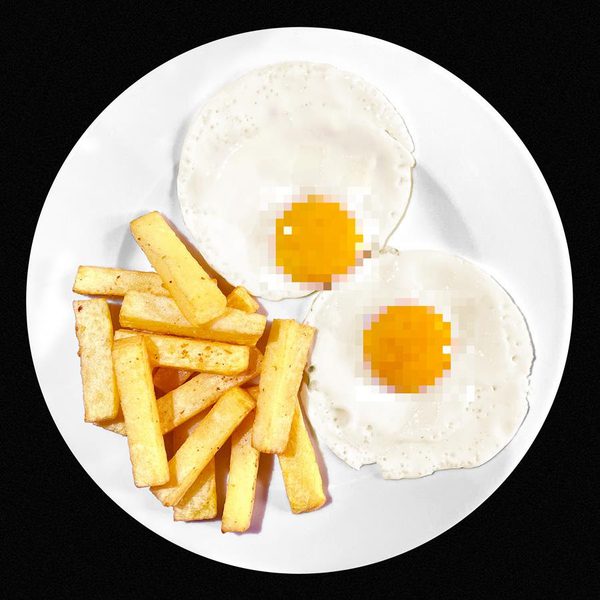
Devendra Banhart: “A record for a surf shop in the middle of a desert”
Descriptions of Devendra Banhart’s music are likely to include the words ‘freaky folk’. Two words that seem somewhat oxymoronic if you look back at the etymology of them; ‘freaky’ meaning something strange or unusual, and ‘folk’ meaning something widespread and traditional. But through conducting this interview, they have now become two words that have come to very surely describe Devendra Banhart. An embodiment of oxymoron, as sweet-sounding and endearing as he may be.
The interview begins and I first fulfil my customary duties; “how are you?” I ask. “I’m ok – I’m walking around New York. I’m looking for apartments with my fiancée right now in a part of town I’ve never been. So I’m talking to you as I go to look for apartments.” If old reruns of ‘Location, Location, Location’ are anything to go by, the task of house hunting is not something to be done without full concentration. But rather than being concerned about the quality of our encounter, as the interview continues, I’ll be assured that he can juggle the interviewee-househunter dualism with abundant ease.
Should you mention Banhart’s name to a seasoned folk music listener, their response will oscillate between talented musician and bearded, arty neo-hippy. But ask the E! News watcher and he’ll be the former flame of Natalie Portman and since cutting his hair, it’s not surprising that he’s been ushered into the world of glossy-magazine fashion modelling courtesy of Kooples. It’d be difficult to say he wasn’t canon fodder for the ‘sell-out’ brigade with all this considered, but this would an easy and auspicious jab, and one that, as Banhart’s new album Mala shows, is irrelevant when considered alongside his knowledge and work as an artist.
“Mala will be your eighth album, I believe?” I ask, pre-empting a quick affirmative response from Banhart. “Hmm, I don’t know let me think…” The seconds pass… “I think it may be the seventh”. Which is true, if you discount his unofficial 25-track demo The Charles C. Leary released before his official debut album Oh Me, Oh My. Devendra has always treated his art with a meticulous seriousness, a mentality that seems insoluble with his glossy-mag alter ego, but is there with a potent force nonetheless.
Still, this kind of awareness of one’s own work can be intimidating as a third party attempting to attain more understanding on things that appear so obvious to the artist. Three years on since the last release of a Banhart LP, I ask what has changed in the space of this time that has perhaps affected the record, “far too much to discuss right now, and far too little that would be of interest.” Was it difficult to keep the album focused, with regards to the amount of influences that would have appeared in those three years? “I don’t know…” he responds, “what do you think?” What I think is that Mala is indeed a more focused album, in very literal sense. His shortest album to date clocking at 14 songs, it manages to successfully draw upon disparate influences but produce a full sounding, structured body of work, while still managing to sound effortless. But the original question would never receive a response; instead the conversation is transported to a cyber-galactic parallel universe. Attempting to engage in oblique responses is made much more difficult with an oblique telephone line. “Um, it’s so strange I keep hearing something…” he says, “are you saying Neptune or Neptunes…? I’m hearing something about mythology… Neptune.” I assure him that Neptune isn’t being discussed and, as the phrase goes, move swiftly on.
“I’ve been a visual artist for the same amount of time that I’ve been a musician,” he replies when asked about his creative methodology, “it’s been parallel with my musical career. Literally to a T – the first solo show I had in New York was the same month as the first record came out. I divide my time between those two disciplines. For the last three years, I haven’t been writing this record. I wrote it a month before recording. The times prior to that I was working on visual art – and those are the two things that I do.” For a moment, the interview is, as suspected it would be at some stage, relegated to second position as Banhart graciously thanks someone who I imagine to be a landlord for their ‘understanding’, before expertly refocussing on the question. “So that’s it, my process changes all the time – it’s one of pain and trauma but it’s all right…”
{pagebreak}

Pain and trauma aside, is Banhart a confident man? He certainly sounds as though he is, or at least confident in his knowledge and with what he wants to project and portray – but is this the kind of thing that is allowed to flourish because of a lengthy career? “I’m certainly more comfortable in my lack of confidence. Perhaps not confident, but more comfortable in my lack of it. I feel like I’ve always been… maybe I’ve always been confident but that isn’t what’s always been important to me – I aspire to be comfortable. Not comfortable in my daily life, but in my work because it is an uncomfortable process most of the time. I don’t know – being comfortable in this uncomfortable space. I know that that’s an oblique comment – I apologise.”
Of all his oblique comments up until this point, this is perhaps the clearest. The ‘freaky’ of Devendra’s music is perhaps this uncomfortable space and the folk element, the ability to out a solid, general name to all the freakiness – to make it translate to others – as shown on Mala. But what is the meaning of Mala, the title – a word that roles easily off the English tongue despite having no definable meaning in the English language? “I chose that word for its elasticity – the fact that it’s ubiquitous is so may different languages. In Serbian it means small, in Spanish it means bad, in Italian it means gangster, in East German it means table, in Gaelic it means bag. It means something else in Hindu. I just like that it’s such a prevalent word in so many different languages.” Is there any kind of relation to the album’s name and how the album turned out? “No,” he responds with a laugh, “I don’t think that name sums up the album as a whole but it is the right title for the album.” It seems strange that the songs on Mala derive no meaning from a word so rich in just that. “It simply represents the title and that’s the right title,” he comments. “I understand that typically the purpose of the title is to sum up the album, but Mala doesn’t really do that.”
“Did this recording process differ from your other albums at all?” I ask, drawing the interview to more familiar and straight forward terrain. “Absolutely…” he replies. “But I think that’s your responsibility – the responsibility of the journalist to comment upon, to elaborate on, don’t you think?” he says, a response met with instantaneous nerves from my end. Of course I’d listened to the album and dissected it, I thought to myself, but like a mentally sophisticated school child’s disdain for pop quizzes, I deflect the question, moving on to discuss the production of ‘You Fine Petted Duck’. Featuring sounds that aren’t typically associated with Banhart, we discuss what inspired the decision to create that specific song. ”Those sounds have been in my recordings for a while now just in a lot more subtle capacity. I was listening to a lot of electronic music when I was making my first record. Although it certainly did not reflect that, it was mostly the guitar and the singing. With this one it was a lot more modern composition, John Cage and the like. It didn’t really reflect the music that I actually make.” Feeling vindicated once Banhart admits to the artistic opaqueness of his music, I respond, ‘I suppose that’s why I asked the initial question of what changed because there are certain things that as a journalist or a listener you won’t pick up on. The way that the listener receives music won’t necessarily be the same way that it was recorded, I guess…’ ”Yes, that’s all for you to comment upon and I’m honoured that you are doing so,” he responds in a spritely manner; a tone, perhaps, of regret at the way his question came across.
It’s apparent that Banhart isn’t as open about his artistic process as some may think. He’s an artist, and like all artists uses his work for cathartic purposes. But outside the walls of a studio, figurative walls are built to recreate the insularity of that creative space and its highly selective audience. But at the forefront of discussions about any artist’s music is how it feels as the finished product to the listener… surely? So are there any themes that run throughout Mala? “The after party of the party that no-one was invited to,” he responds. “I don’t really mean much more that literally just that. I guess I mean that… not a lot of people are invited.” He elaborates some more, ”It’s like a lonely Bar Mitzvah. It’s like a record for a surf shop in the middle of a desert.”
Once again, an oxymoron – he has made an album that shouldn’t appeal at all to a wider audience, while its inevitable fate is to be released and consumed by said audience. So how does Banhart hope that people will receive the album – are there specific intentions, or does he want to present the album to listeners and let them make their own judgements? “Oh, absolutely the latter,” he replies without a quiver of uncertainty in his voice. Banhart has released Mala in the same way as a person watches a soap opera. The record – with all of its love songs and pop structures – exist not to be touched or tampered with by the audience, but to be witnessed as though we are the fly on the wall of the guest-less after party, the lonely Bar Mitzvah or the surf shop in the desert.
Mala is available now through Nonesuch Records.
Get the Best Fit take on the week in music direct to your inbox every Friday

Wet Leg
moisturizer

MF Tomlinson
Die To Wake Up From A Dream

BIG SPECIAL
National Average





